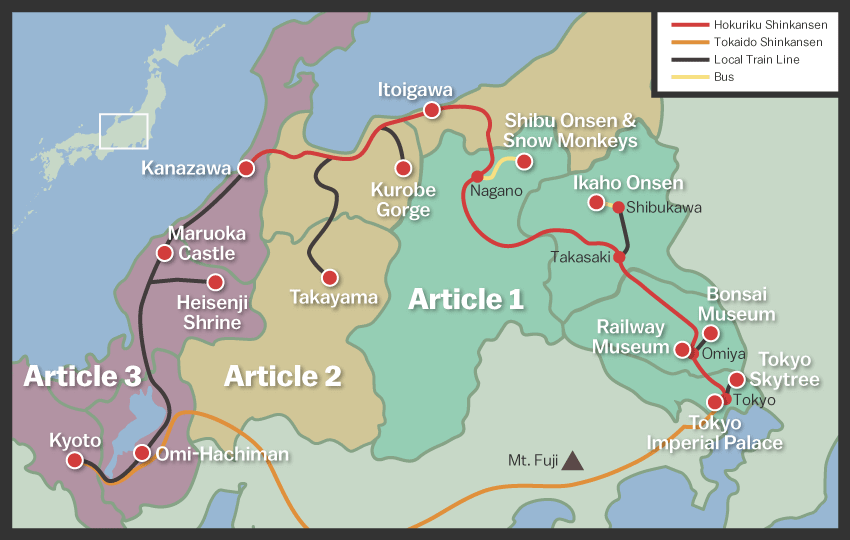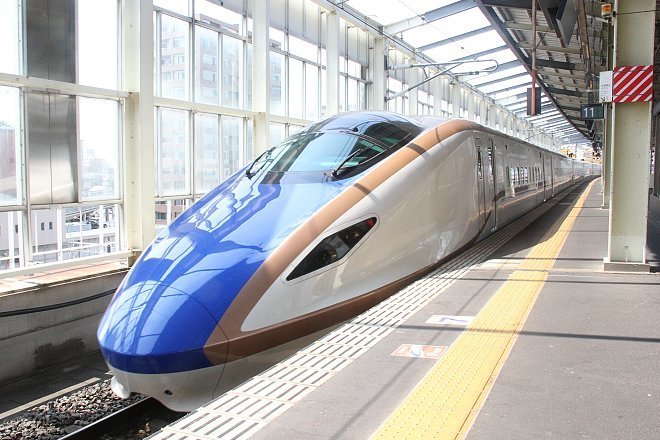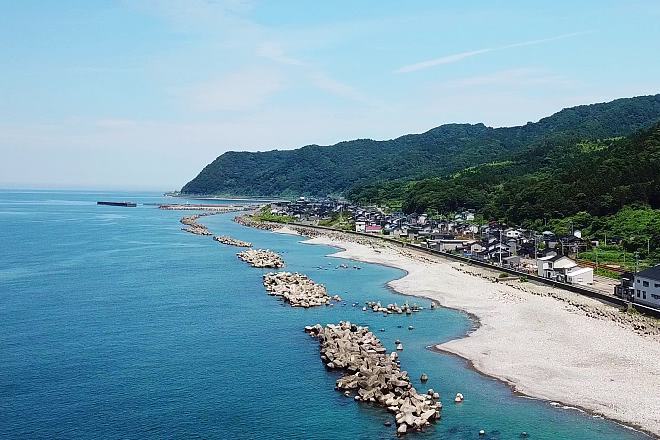This is the first part of a three-part series about traveling along Japan's New Golden Route.
We begin our journey by taking in a couple of Tokyo's attractions before heading north through Saitama and ending the first day in Ikaho Onsen in Gunma Prefecture. The following morning we will travel over the prefectural border into Nagano and check out the famous snow monkeys before ending this first part of our journey in the nearby hot spring town of Shibu.

Day 1
We got up to an early start in Tokyo to begin our seven-day journey to Kyoto and headed first to the iconic Tokyo Skytree. At 634 meters tall, this behemoth broadcasting tower stands as the tallest of its kind in the world. Not just dedicated to transmitting television signals to the homes of Tokyoites, the Skytree also has a lot to offer visitors, including its two observation decks which afford impressive, panoramic views of Tokyo, and a plethora of shops and eateries on its lower levels.


Before heading on to Saitama Prefecture, we made a stop at the Tokyo Imperial Palace, which can be reached on foot from Tokyo Station. Upon arrival we strolled around the picturesque grounds and took in views of one of the palace's most famous landmarks, the Nijubashi Bridge. A great place to relax in the midst of extensive greenery, the imperial palace offers escape from the concrete streets of central Tokyo.



It was now time to return to Tokyo Station and catch a shinkansen to Saitama Prefecture, where the first spot on our list was the Omiya Bonsai Village. This tranquil area is famous as the center of Japanese bonsai, with multiple bonsai tree nurseries and a bonsai museum located along its streets. The museum in particular made for quite the pleasant setting, and we enjoyed meandering around its grounds learning more about the art form and taking in numerous stunning specimens.


Following our visit to the Bonsai Village we made the short journey across town to another of Saitama's premier attractions, The Railway Museum. This museum, which stands as the largest of its kind in Japan, houses a multitude of retired trains that visitors can get up close to, along with various train simulators and an impressive diorama depicting a town with a train network. A must for train lovers finding themselves in the region, the museum also contains an area from which good views can be had of passing trains and shinkansen.

By shinkansen, local train and bus we made our way to where we'd be spending the first night of our seven-day tour. The historic town of Ikaho Onsen in Gunma Prefecture is famous for its iconic stone staircase that climbs the hillside. After checking into our ryokan, we explored the town, bathed in the town's hot spring waters, and indulged in an evening meal of traditional Japanese food.



Day 2
We were up and out early to make the journey across the border to Nagano Prefecture and to the Jigokudani Monkey Park in Yamanouchi, where we hoped to see Japan's famed snow monkeys. Following a bus ride from Nagano Station and then a half-hour walk through the forest, we arrived at the monkey park and were greeted by dozens of monkeys grooming, searching for food or just resting in the shade to escape the early-afternoon sun.
While the monkeys are less inclined to use the park's hot spring pool outside of winter, the visit to the park proved worthwhile even in summer.



After our fun in the monkey park, we made our way to where we'd be staying the second night of our trip, Shibu Onsen. This old hot spring town is known for its picturesque streets, that make for excellent strolling, and for its nine bathhouses which are accessed by a key given to visitors staying the night in the town.
After checking in at our traditional Japanese inn, we made a tour of the town and stopped by multiple bathhouses before heading back to our ryokan for another delectable meal. An atmospheric town, Shibu Onsen proved the perfect place to end this first part of our seven-day trip from Tokyo to Kyoto.






